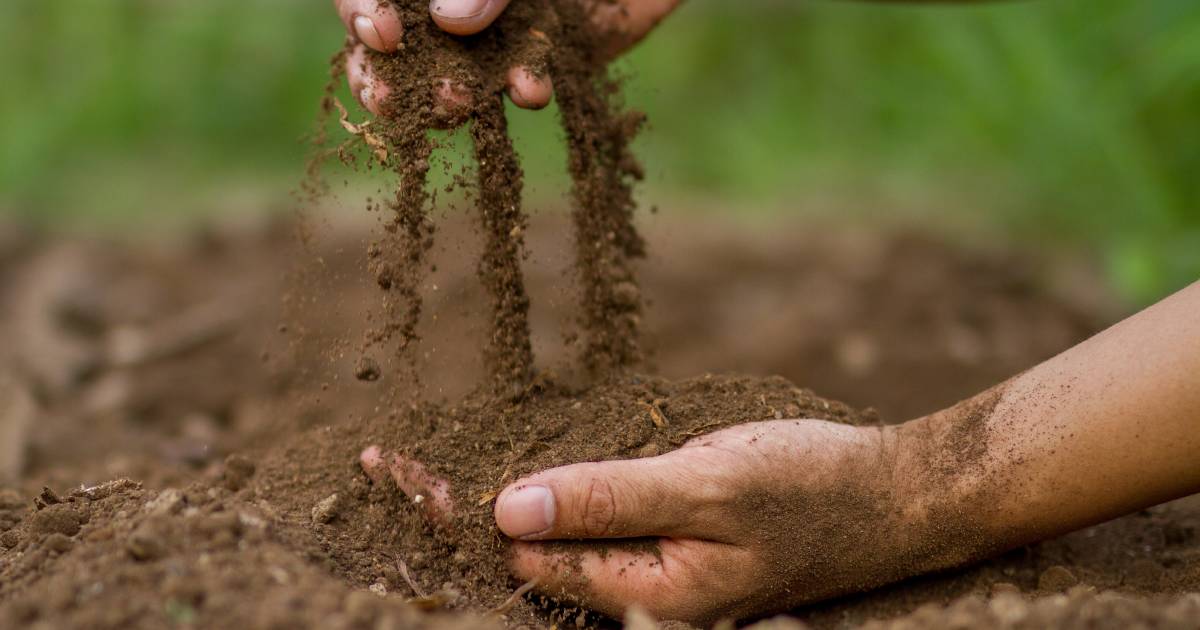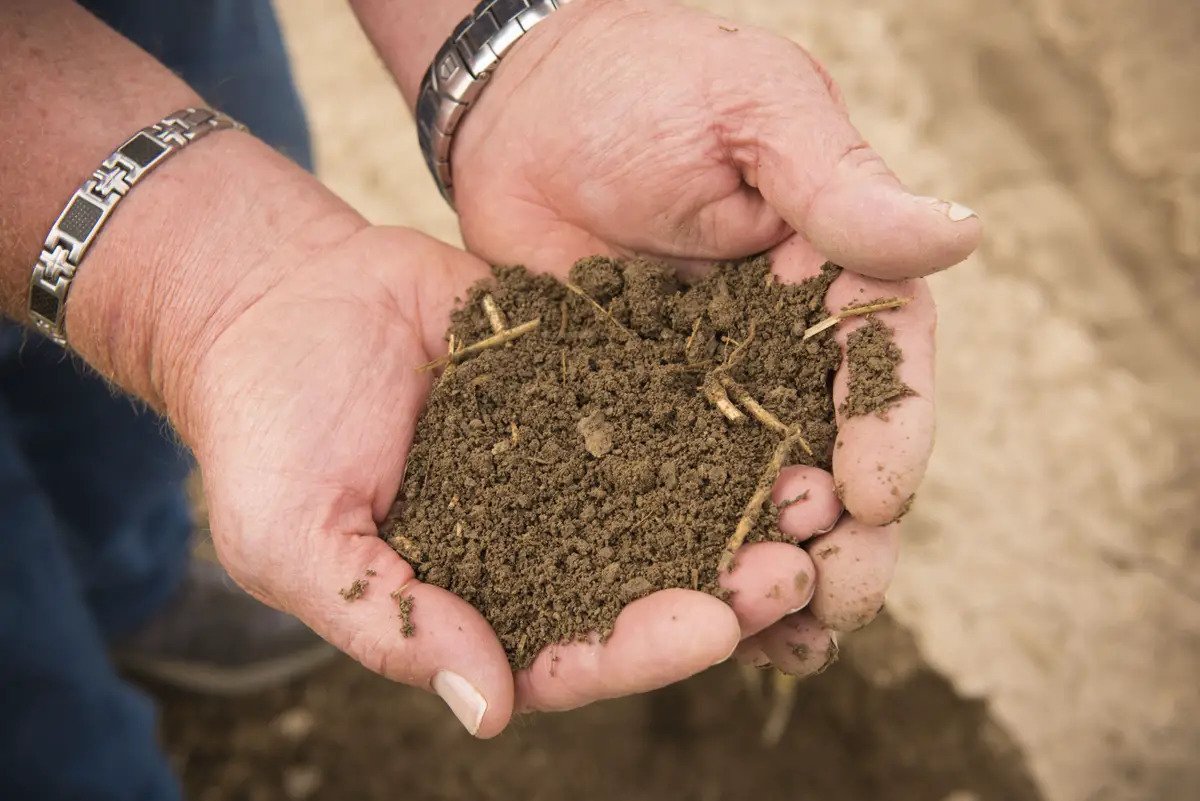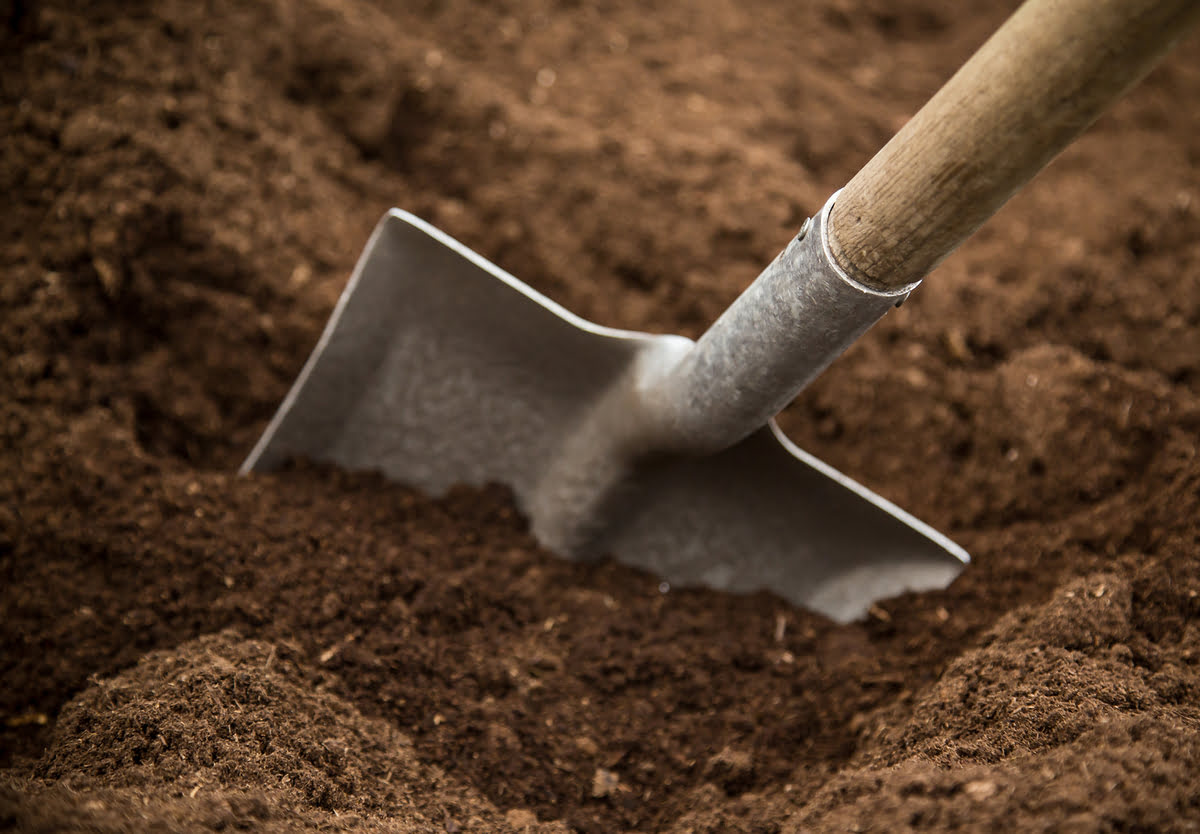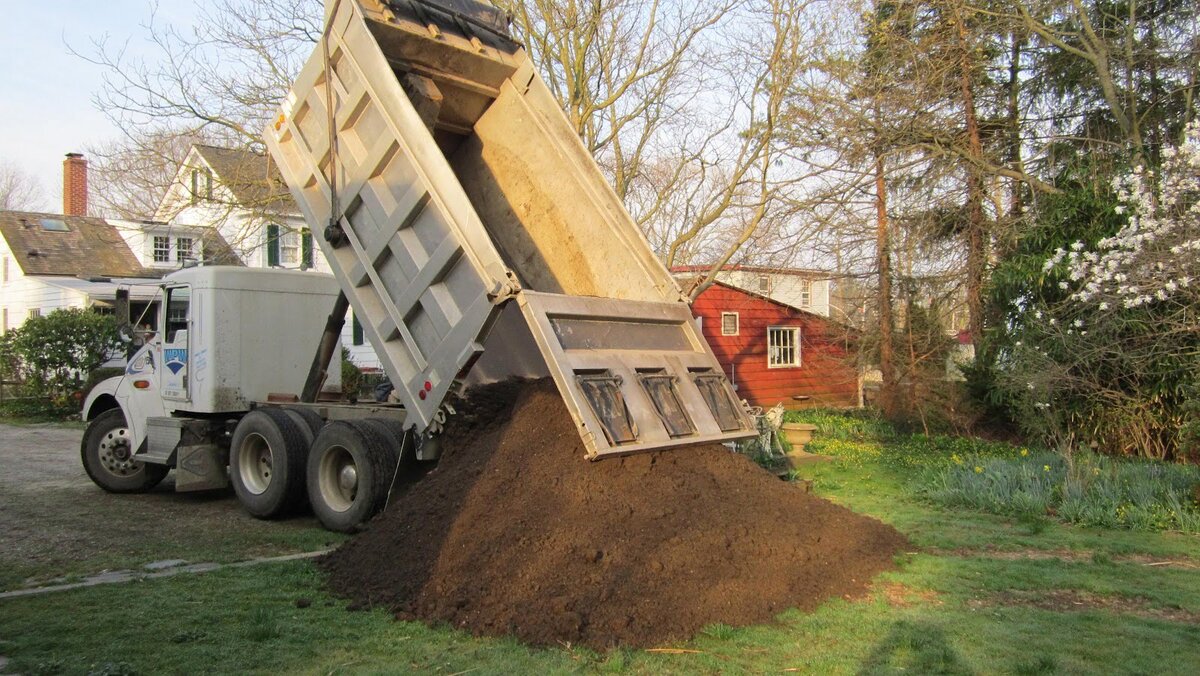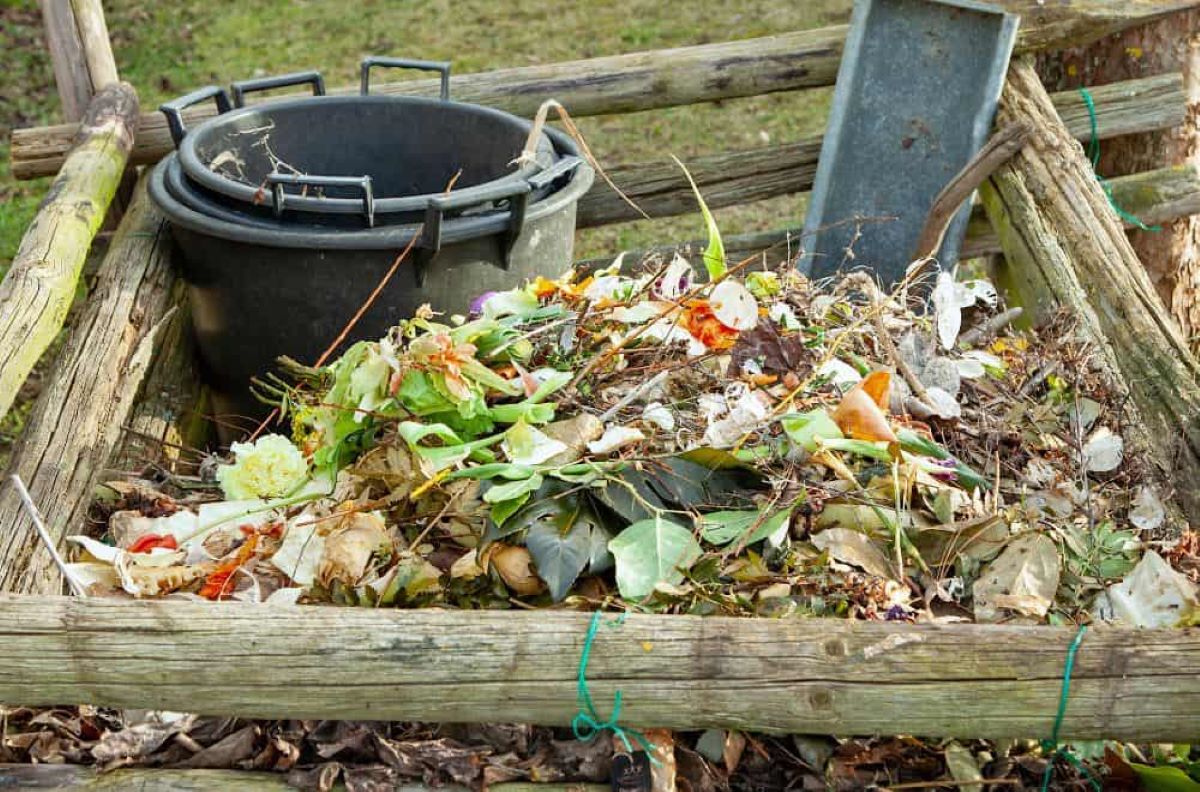Home>Gardening News and Trends>Latest News>Approximately How Many Years Does One Centimeter Of Topsoil Take To Form


Latest News
Approximately How Many Years Does One Centimeter Of Topsoil Take To Form
Modified: February 5, 2024
Stay up to date with the latest news on soil formation! Discover the approximate time it takes for one centimeter of topsoil to develop and the factors that influence this process.
(Many of the links in this article redirect to a specific reviewed product. Your purchase of these products through affiliate links helps to generate commission for Chicagolandgardening.com, at no extra cost. Learn more)
Table of Contents
Introduction
Welcome to the fascinating world of soil formation! Have you ever wondered how long it takes for just one centimeter of topsoil to develop? Soil, a complex mixture of minerals, organic matter, air, water, and living organisms, is a vital component of our planet’s ecosystem. It supports plant growth, provides habitats for various organisms, and plays a crucial role in water filtration and climate regulation.
Soil formation is a gradual process that takes thousands to millions of years, influenced by numerous factors such as climate, parent material, vegetation, topography, and time. While the rate of soil formation can vary significantly depending on these factors, it is important to understand the basic processes and conditions required for the development of topsoil.
In this article, we will delve deeper into the factors influencing soil formation, the definition of topsoil, and the processes involved in its formation. Additionally, we will explore the various factors that affect the rate of topsoil formation and estimate the time required for one centimeter of topsoil to develop.
So, let’s embark on a journey into the intricate world of soil formation and gain a better understanding of the remarkable processes that shape our planet’s surface!
Factors Affecting Soil Formation
Soil formation is a complex process that is influenced by various factors. Understanding these factors is essential in comprehending the time it takes for topsoil to develop. Let’s take a closer look at some of the key factors affecting soil formation:
- Climate: Climate plays a significant role in soil formation. Temperature and precipitation patterns determine the rate of weathering and erosion, which are critical processes in soil development. The type and intensity of climate (arid, humid, temperate, etc.) greatly influence the characteristics of the soil formed.
- Parent Material: The parent material refers to the geological material from which the soil is derived. This material can be rock, sediments, or organic matter, and its composition affects the chemical, physical, and biological properties of the resulting soil.
- Vegetation and Organisms: Vegetation and organisms play a crucial role in soil formation. Plants contribute to the accumulation of organic matter through the decomposition of plant residues. The roots of plants also aid in the physical breakdown of rocks and enhance soil structure. Organisms like earthworms, bacteria, fungi, and insects contribute to nutrient cycling and soil structure formation through their activities.
- Topography: The shape and slope of the land impact soil formation. Steep slopes may lead to erosion, while flat or gently sloping areas tend to accumulate more organic matter and water, fostering soil development.
- Time: Soil formation is a slow process that occurs over thousands to millions of years. The longer the time, the more developed the soil becomes, as weathering, organic matter accumulation, and soil horizons continue to evolve.
These factors interact and influence each other, creating a dynamic environment for soil formation. Depending on the specific conditions, the rate of soil formation may vary significantly, resulting in different soil types and properties.
Understanding Topsoil
Before we explore the processes involved in topsoil formation, it is crucial to understand what topsoil is and why it holds such importance in soil science and agriculture.
Topsoil is the uppermost layer of soil, ranging from a few centimeters to a few inches in thickness. It is rich in organic matter, nutrients, and microorganisms, making it a fertile layer for plant growth. The topsoil layer is often darker in color compared to the underlying layers due to the higher organic matter content.
Topsoil plays a key role in supporting plant health and productivity. It provides roots with nutrients, water, and oxygen necessary for their growth. It also acts as a reservoir, holding moisture for plants during dry spells and allowing excess water to drain properly to prevent waterlogging.
In addition to being a vital medium for plant growth, topsoil acts as a habitat for various organisms, including insects, earthworms, bacteria, and fungi. These organisms contribute to the decomposition of organic matter, nutrient cycling, and the formation of soil structure.
Topsoil is also essential for soil conservation and erosion control. Its structure and organic matter content improve soil stability, reducing the risk of erosion caused by wind and water. Therefore, maintaining and preserving the topsoil layer is crucial for sustainable agriculture and ecosystem health.
Understanding the significance of topsoil in supporting plant growth and ecosystem functions highlights the importance of identifying the processes involved in its formation.
Processes Involved in Topsoil Formation
Topsoil formation is a result of complex interactions between physical, chemical, and biological processes over an extended period. Several processes contribute to the development of this fertile layer. Let’s take a closer look at some of the key processes involved:
- Weathering: Weathering refers to the physical and chemical breakdown of rocks and minerals. Physical weathering, caused by factors such as temperature changes and freeze-thaw cycles, breaks down rocks into smaller fragments. Chemical weathering, on the other hand, involves reactions that change the composition and structure of rocks. Both forms of weathering contribute to the production of smaller particles that become part of the soil matrix.
- Erosion: Erosion, driven by wind, water, or ice, is responsible for the transport and deposition of soil particles. It can occur on a regional scale, bringing in sediments from distant areas, or within a local environment, redistributing soil particles within the landscape. Erosion can result in the loss of topsoil if not managed properly, impacting fertility and soil quality.
- Organic Matter Accumulation: Organic matter, derived from decaying plant and animal materials, plays a crucial role in topsoil formation. As organic matter decomposes, it releases nutrients and minerals, enriching the soil. It also enhances soil structure and moisture-holding capacity, supporting the growth of soil organisms.
- Biological Activity: Soil organisms, including bacteria, fungi, earthworms, and insects, contribute to topsoil formation through their activities. They break down organic matter, release nutrients, and modify soil structure. Earthworms, for example, burrow through the soil, depositing organic matter (castings) and improving soil aeration.
- Translocation: Translocation refers to the movement of dissolved substances within the soil. Water, carrying dissolved nutrients and minerals, percolates through the soil profile, transporting these substances from one layer to another. This movement can lead to the accumulation of nutrients in the topsoil layer, enhancing its fertility.
These processes occur simultaneously, shaping the characteristics of the topsoil layer. The balance between weathering, erosion, organic matter accumulation, biological activity, and translocation determines the composition, structure, and fertility of the topsoil.
Understanding the processes involved in topsoil formation allows us to appreciate the intricate relationships between the physical, chemical, and biological aspects of soil and its crucial role in supporting life on Earth.
Factors Influencing Topsoil Formation Rate
The rate at which topsoil forms is influenced by various factors that interact and impact the development process. Understanding these factors helps us comprehend the time it takes for topsoil to accumulate. Here are some key factors influencing the rate of topsoil formation:
- Climate: Climate plays a significant role in the rate of topsoil formation. In regions with a warm and humid climate, the decomposition of organic matter is faster, leading to a higher accumulation of fertility-enhancing materials in the topsoil. Conversely, in arid regions, where the decomposition process is slower, topsoil accumulation may take a longer time.
- Parent Material: The composition of the parent material strongly influences the rate of topsoil formation. Soils derived from easily weatherable rocks and minerals tend to develop more quickly than those derived from resistant materials. For example, soils derived from volcanic materials are often fertile and develop rapidly due to the high nutrient content of volcanic ash.
- Vegetation and Organisms: The presence of vegetation and organisms greatly influences the rate of topsoil formation. Plants contribute to the accumulation of organic matter through the shedding of leaves and the decomposition of plant residues. This organic matter enhances nutrient availability and soil structure. Furthermore, soil organisms, such as earthworms and microorganisms, facilitate the breakdown of organic matter and nutrient cycling, accelerating topsoil formation.
- Topography: The shape and slope of the land affect the rate of topsoil formation. Steep slopes are prone to erosion, which can remove the topsoil layer and slow down its development. Gentle slopes or relatively flat areas, on the other hand, promote the accumulation of organic matter and nutrients, facilitating faster topsoil formation.
- Human Activity: Human activities can significantly impact the rate of topsoil formation. Unsustainable agricultural practices, such as excessive tilling, overgrazing, or deforestation, can accelerate erosion and degrade the topsoil layer. On the other hand, sustainable management practices, such as conservation agriculture and reforestation, can enhance topsoil formation by promoting organic matter accumulation and reducing erosion.
These factors work together to shape the rate of topsoil formation. While some factors can accelerate the process, others can hinder it. It is important to consider these factors when managing soil resources and implementing practices that promote soil health and sustainability.
Estimated Time for One Centimeter of Topsoil Formation
The time it takes for one centimeter of topsoil to form can vary depending on several factors. Generally, topsoil formation is a slow and gradual process that can take centuries or even millennia. However, estimating the exact time required for one centimeter of topsoil formation is challenging due to the complexity and variability of soil development.
The rate of topsoil formation depends on factors such as climate, parent material, vegetation, organisms, and topography. In favorable conditions, where organic matter accumulation is high and weathering processes are active, topsoil can develop more quickly. In contrast, in harsh environments with limited organic inputs or resistant parent materials, topsoil formation may take a longer time.
Estimates suggest that under favorable conditions, it can take approximately 500 to 1,000 years for one centimeter of topsoil to form. This estimate assumes moderate rates of organic matter accumulation, weathering, and nutrient cycling. However, these rates can vary significantly depending on the aforementioned factors.
In some situations, it may take even longer for one centimeter of topsoil to develop. For example, in areas with cold climates or high elevation, the rate of soil development is slower due to reduced biological activity and less favorable conditions for organic matter decomposition.
It is important to note that these estimates are rough approximations and should be considered as general guidelines rather than precise timelines. Soil formation is a complex and dynamic process influenced by multiple interacting factors, and the rate of topsoil formation can vary significantly from one location to another.
Furthermore, it is worth mentioning that human activities can significantly impact the rate of topsoil formation. Unsustainable land management practices, such as excessive erosion, depletion of organic matter, or soil degradation, can accelerate the loss of topsoil and hinder its formation.
Understanding the estimated time for topsoil formation provides us with a perspective on the importance of preserving existing topsoil and implementing sustainable land management practices to maintain and enhance soil fertility for future generations.
Conclusion
Soil formation is a complex and fascinating process that takes place over a significant period. The formation of topsoil, the uppermost layer rich in organic matter and nutrients, is influenced by various factors such as climate, parent material, vegetation, organisms, and topography. Understanding these factors is crucial in estimating the time it takes for one centimeter of topsoil to form.
While it is difficult to provide an exact timeframe, estimates suggest that under favorable conditions, it can take approximately 500 to 1,000 years for one centimeter of topsoil to develop. However, these estimates can vary depending on the specific circumstances and environmental factors.
Factors such as climate, parent material composition, vegetative cover, soil organisms, and topography interact and determine the rate at which topsoil forms. Human activities can also have a significant impact on topsoil formation, either by promoting sustainable practices that enhance soil health or by contributing to erosion and degradation.
Understanding the importance of topsoil in supporting plant growth, maintaining ecosystem functions, and providing crucial services such as water filtration and climate regulation highlights the need for soil conservation and sustainable management practices. Preserving existing topsoil and implementing erosion control, organic matter management, and sustainable agriculture practices are essential for maintaining soil fertility and promoting long-term soil health.
As custodians of the land, it is our responsibility to protect and nurture our soil resources. By recognizing the intricate processes and factors involved in topsoil formation, we can work towards preserving this vital and finite resource for future generations.


